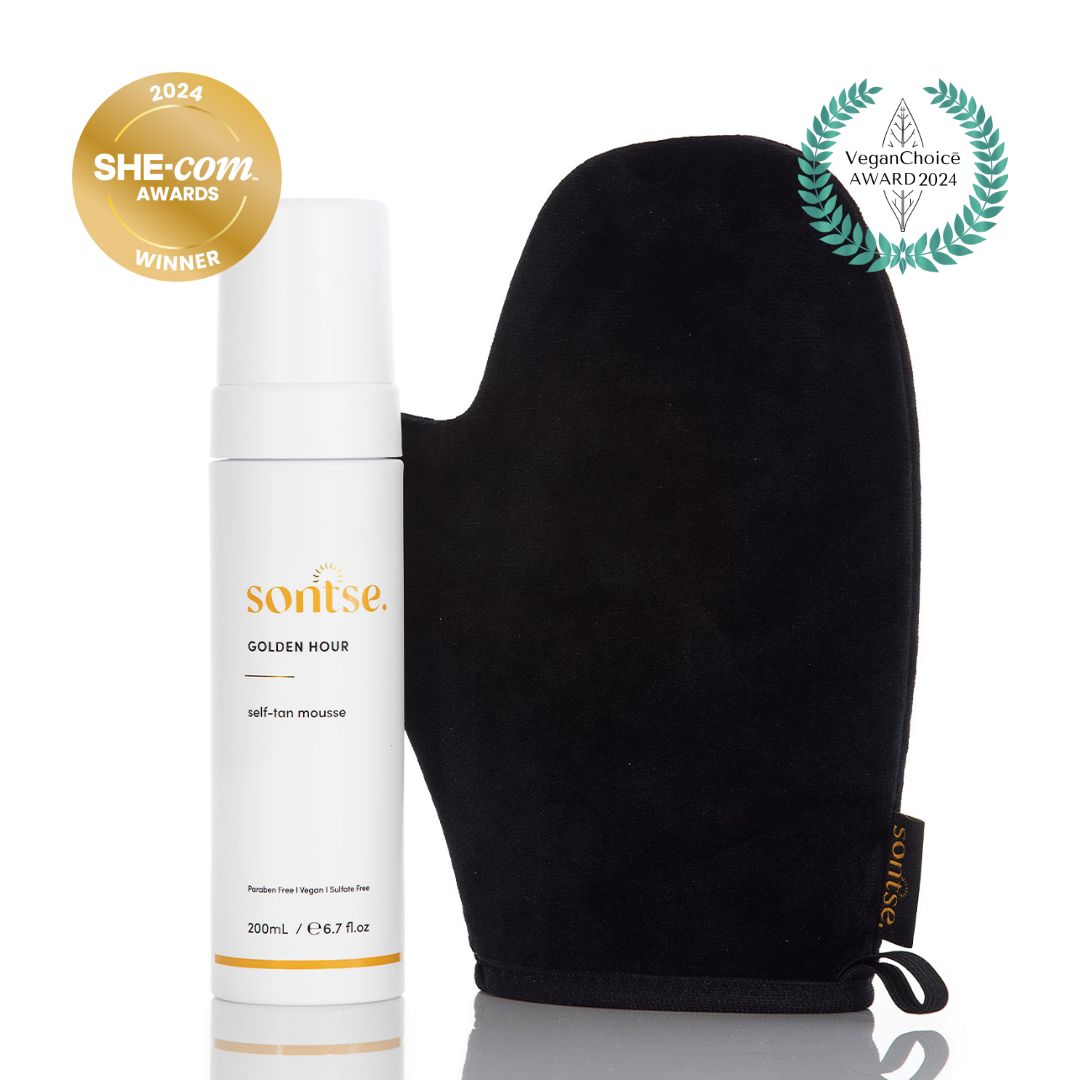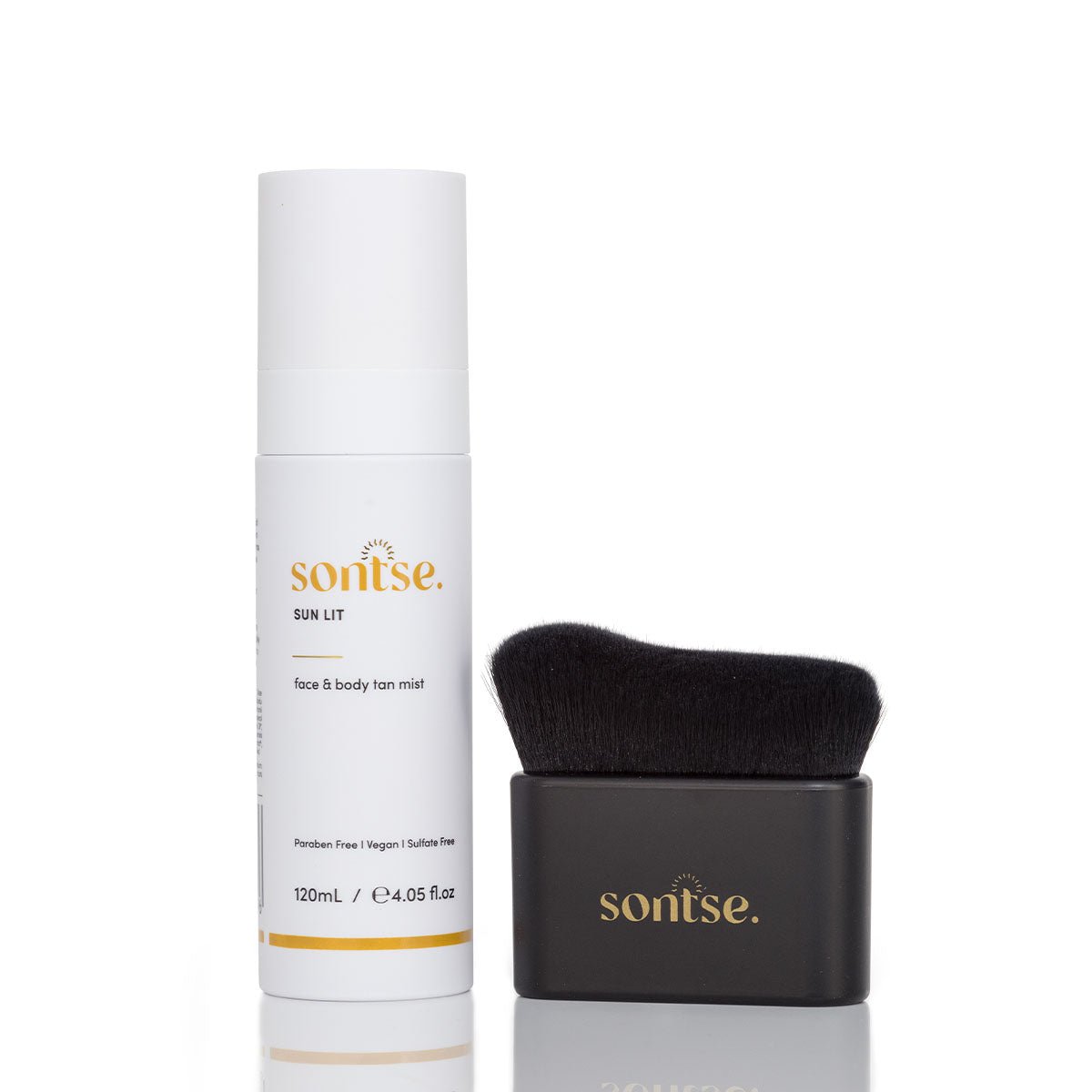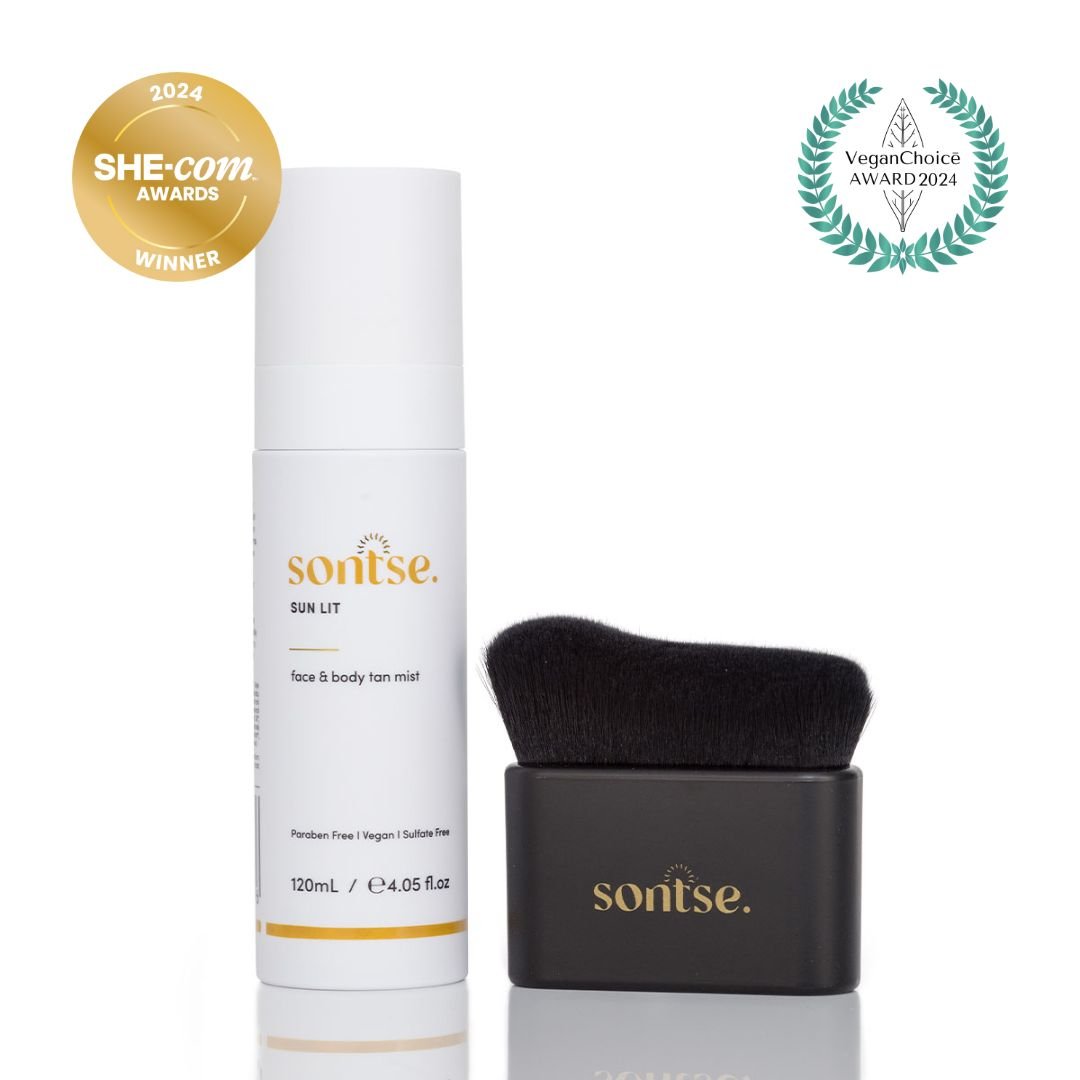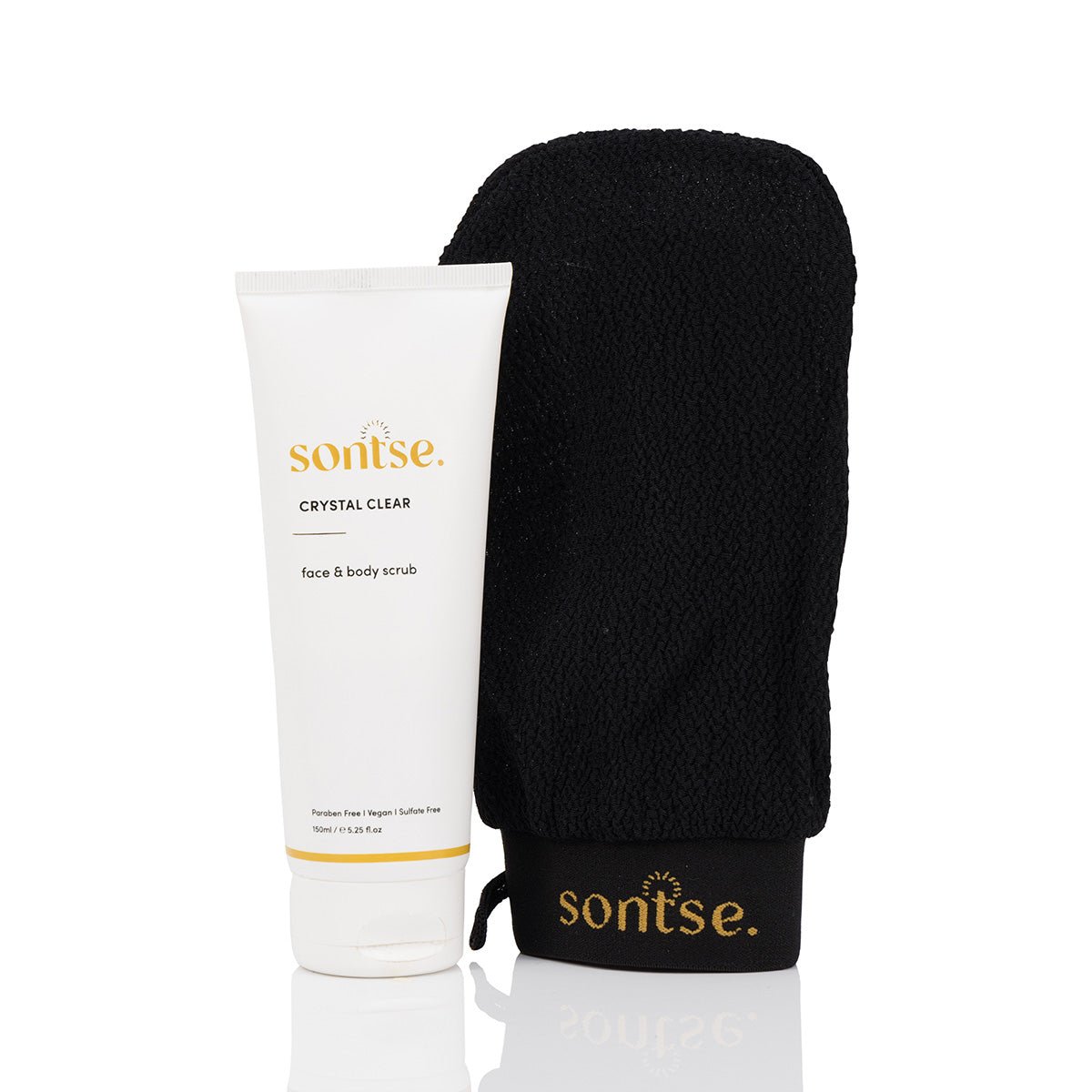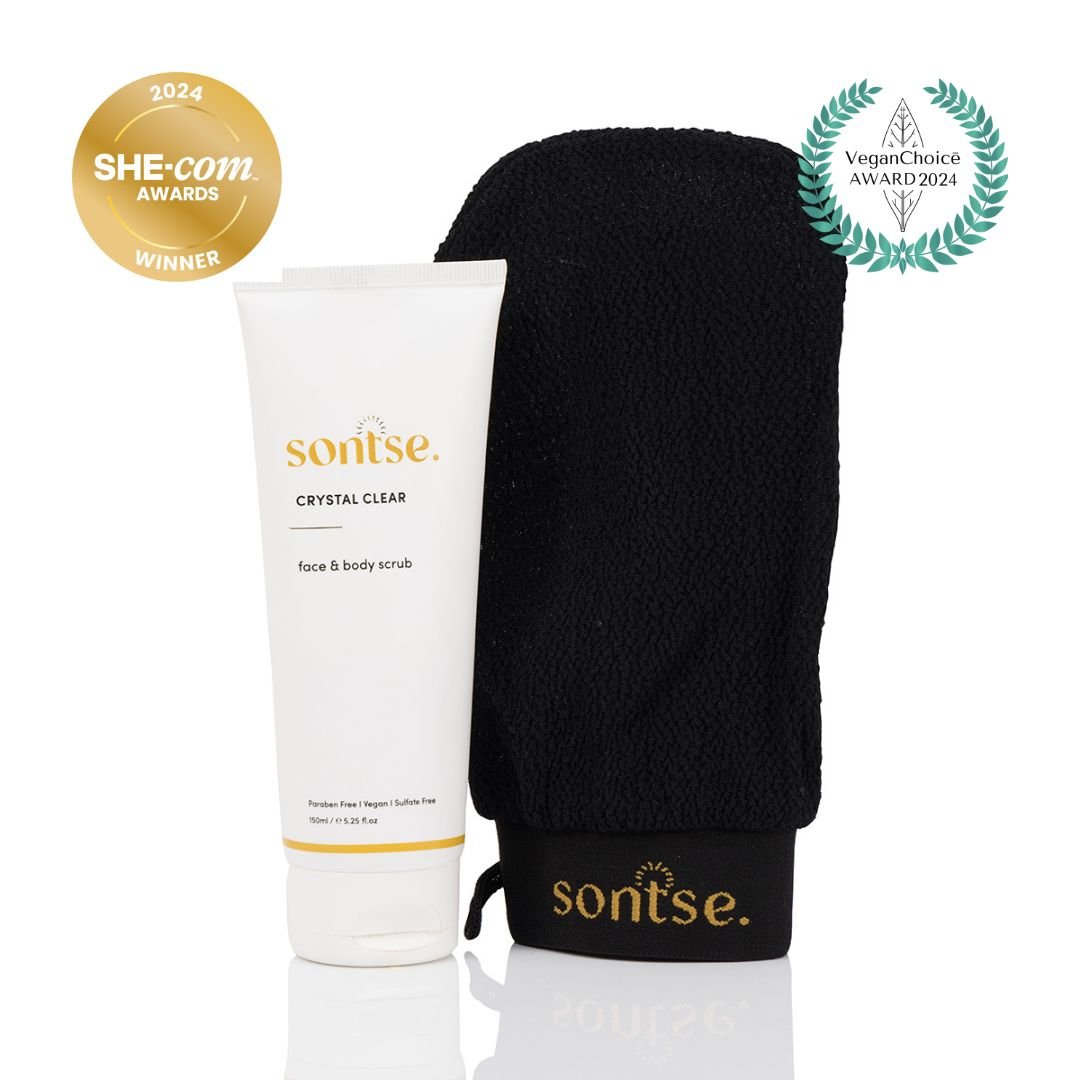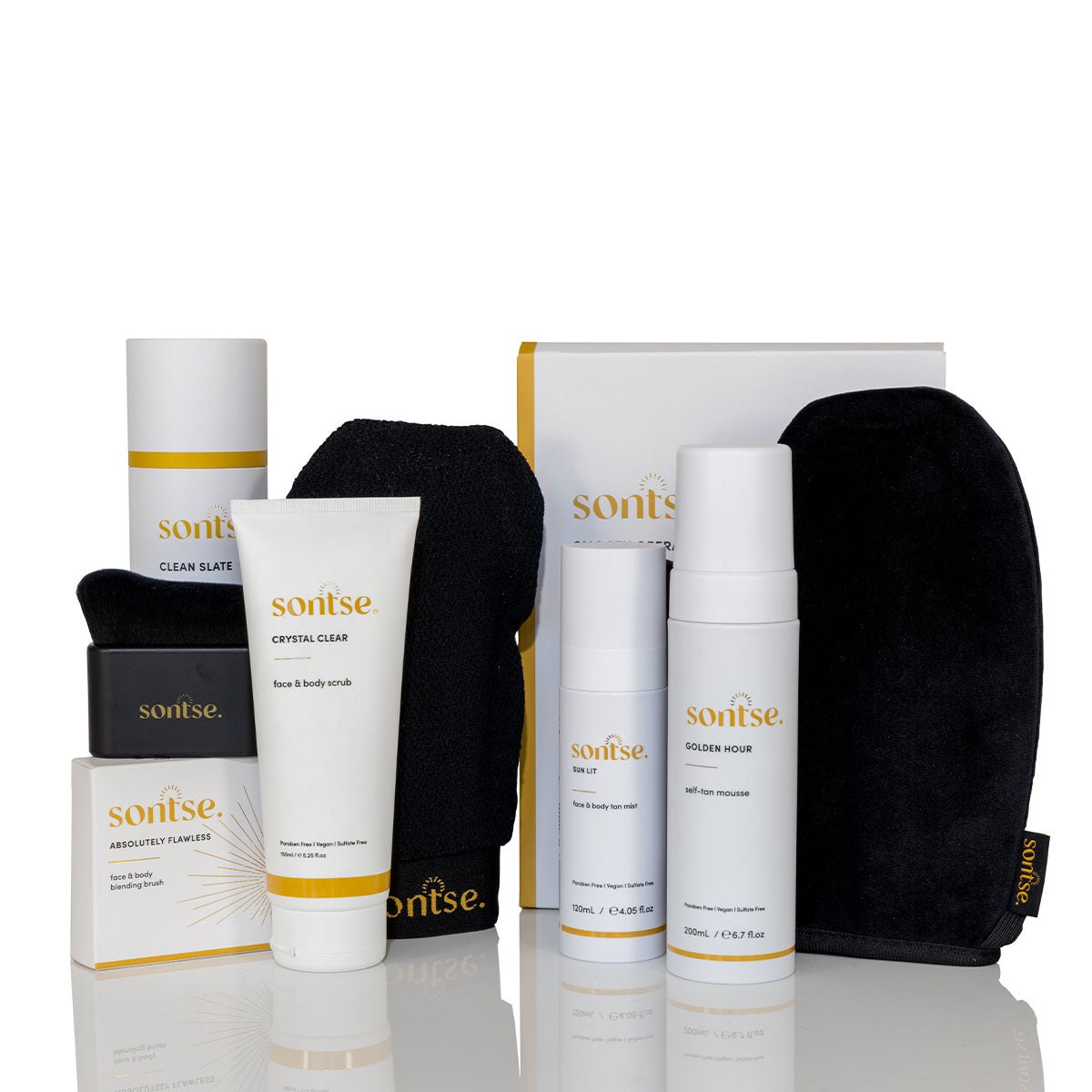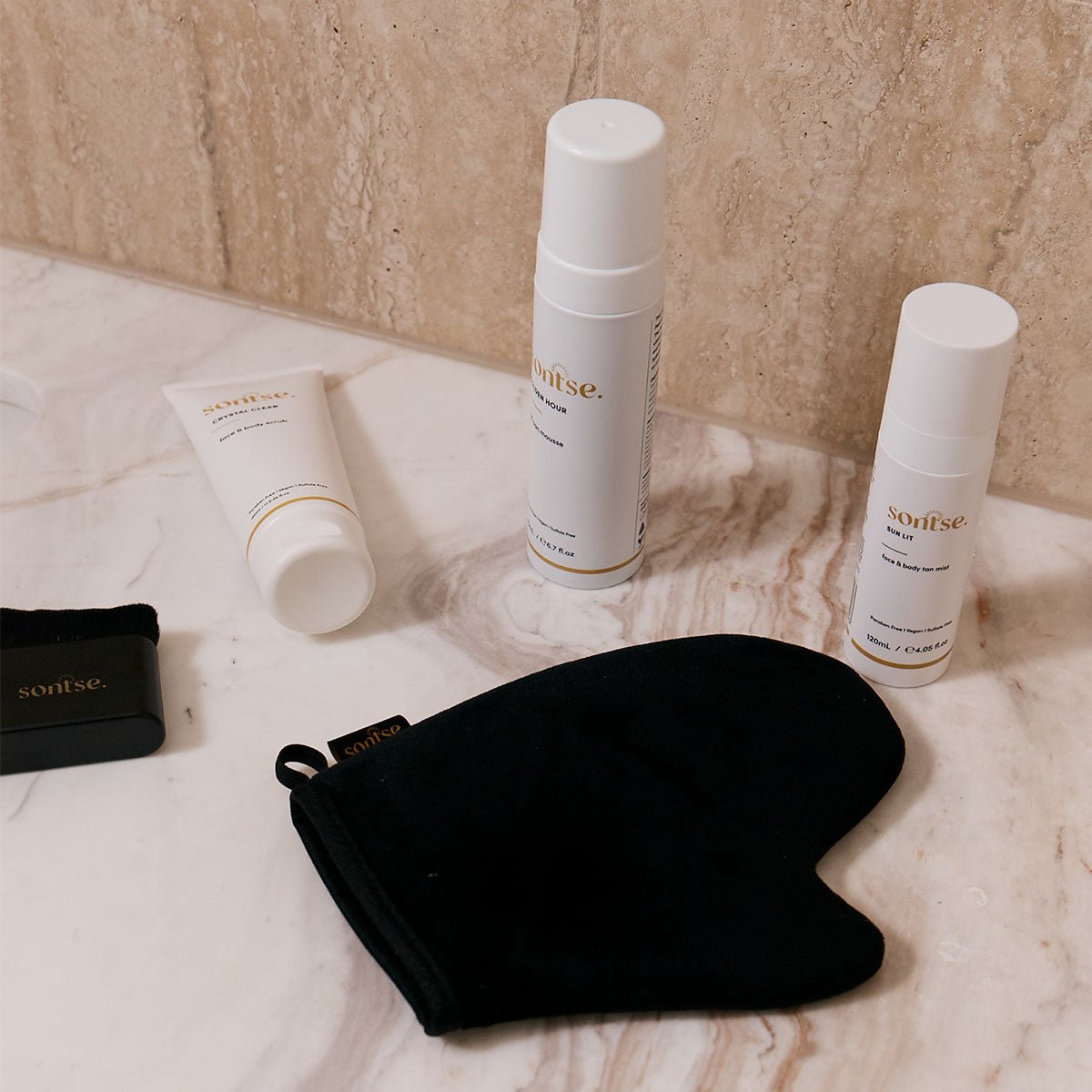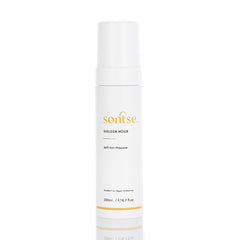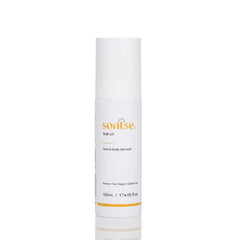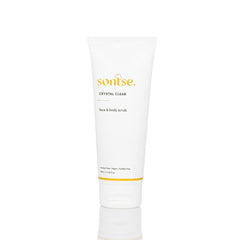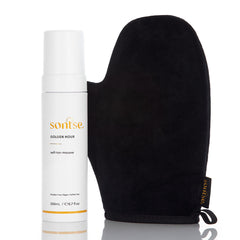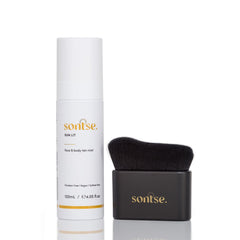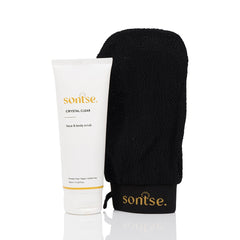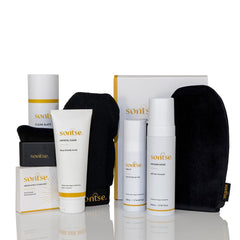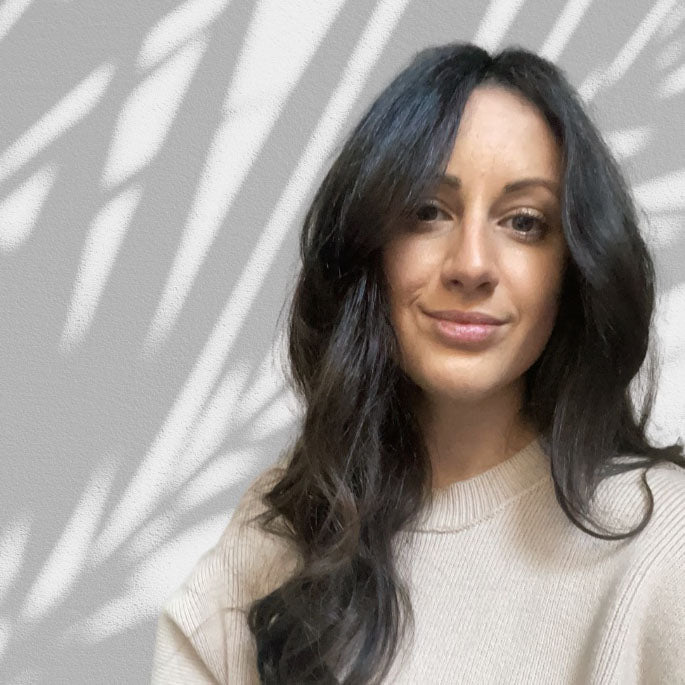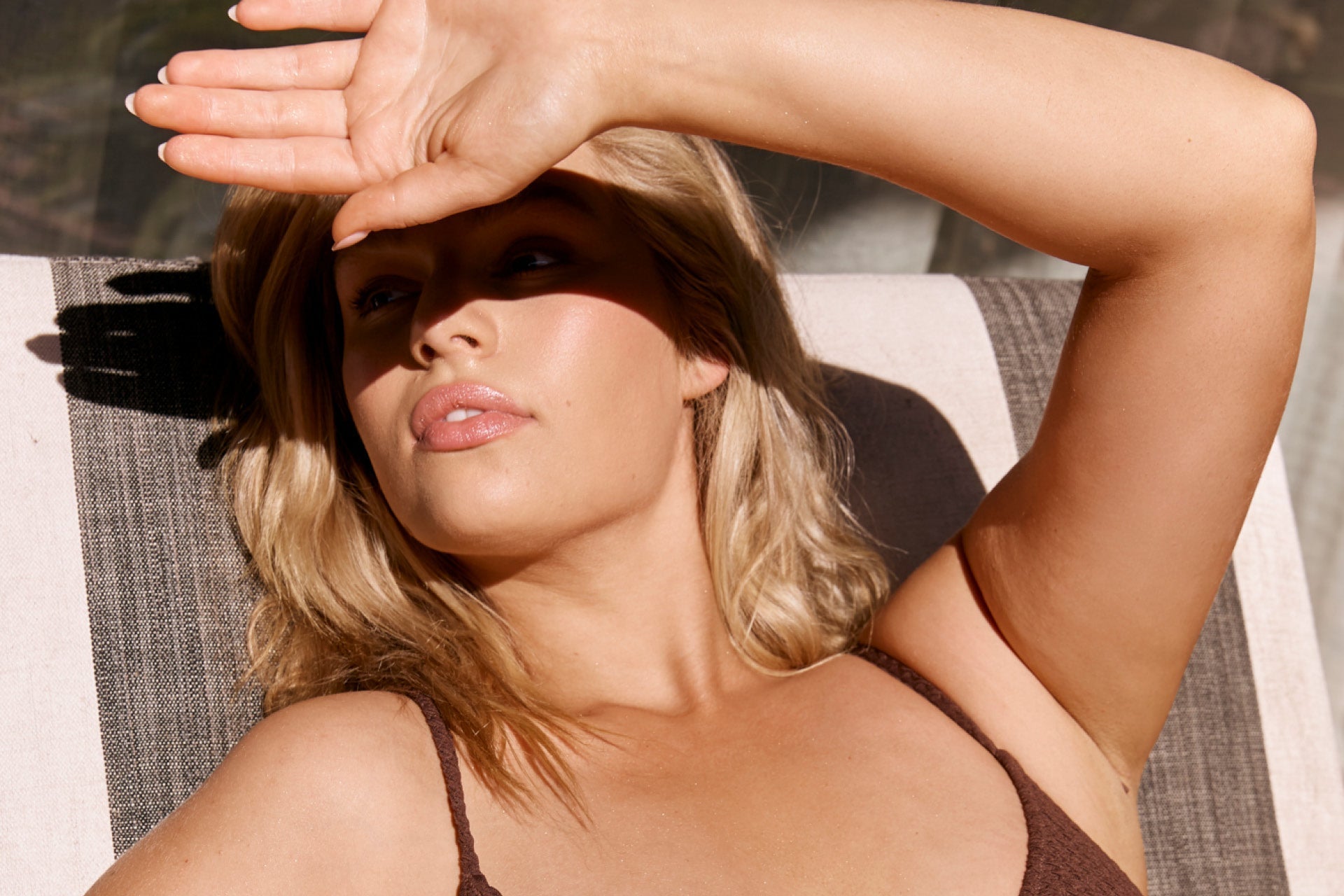That pregnancy glow is undeniably beautiful, but there are times when you might want to enhance your natural radiance. Perhaps you're preparing for maternity photos, attending a wedding, or simply missing that sun-kissed confidence you usually enjoy. The question many expecting mothers are asking is straightforward: can you safely use sunless tanning products during pregnancy?
Here's what you need to know about pregnancy and fake tan while pregnant. When you're already navigating so many changes and restrictions, maintaining small rituals that make you feel like yourself becomes even more important.
Is Self Tanner Safe For Pregnancy?
The research shows that most self tanners while pregnant are considered safe when used appropriately. Although there are limited studies, there is little evidence to suggest that self-tanners are harmful to an unborn baby (Nemours KidsHealth, 2024). The active ingredient in most sunless tanners, dihydroxyacetone (DHA), only affects the top layer of your skin.
But pregnancy changes everything about how we think about what we put on our bodies, doesn't it? You're probably reading ingredient lists like never before and questioning products you've used for years. That caution is completely normal and entirely appropriate.
According to American Pregnancy Association (2021), The only concern is whether the active ingredient, dihydroxyacetone (DHA), is able to penetrate the skin. Studies do not confirm that it can, but some health care providers encourage women to wait until after the first trimester, just to play it safe. DHA has been used in cosmetics since 1960 and no problems have been reported (American Pregnancy Association, 2021).
How Sunless Tanners Work and Pregnancy Safety
Sunless tanners work through a process called the Maillard reaction. DHA, a sugar-based compound, reacts with amino acids in the dead skin cells on your skin's surface. This creates that golden-brown colour you see developing over a few hours.
When DHA is placed on the skin, there is very poor absorption of DHA into the bloodstream (less than 1%). Therefore, only very small amounts of DHA should be able to reach the pregnancy (National Library of Medicine, 2023).
The key point here is that this reaction happens only in the outermost layer of your skin - the stratum corneum. These are dead skin cells that you'd naturally shed anyway. The DHA doesn't go any deeper.
So is self tanner safe during pregnancy?
Although it’s safe to assume yes from this, be mindful that during pregnancy, your skin might be more sensitive than usual. Even if you have used sunless tanners before, try a patch of skin first. Your skin may be more sensitive and irritable during pregnancy (American Pregnancy Association, 2021).
And, as always consult with your doctor or medical professional before deciding if self-tanning during pregnancy is safe for you. In the mean time, you may also find our journal article, Is Self Tanner Bad For You, a helpful read.
Pregnancy And Self Tanner Ingredients to Avoid
Not all sunless tanners are created equal. Is there such a thing as pregnancy safe self tanner? Here's what to watch out for:
Parabens
Often used as preservatives in cosmetics, parabens can disrupt hormone function. Scientific studies suggest that parabens can disrupt hormones in the body and harm fertility and reproductive organs, affect birth outcomes, and increase the risk of cancer (Environmental Working Group, 2019). Parabens have been found in human cord blood, placental tissue, breast milk, and amniotic fluid, with some research suggesting increased risk in pregnancy with paraben exposure (Dr. Lora Shahine, 2020).
Formaldehyde and Formaldehyde Releasers
These chemicals, used in many cosmetic products as preservatives, are known carcinogens. According to the Centers for Disease Control and Prevention, formaldehyde exposure may increase the risk of fertility problems and miscarriage (CDC, 2024). Nearly 1 in 5 cosmetic products contains a substance that generates formaldehyde (Environmental Working Group, 2013).
Oxybenzone and Octinoxate
While these chemicals are more commonly found in sunscreens, they can disrupt hormones and are best avoided in all skincare products during pregnancy as part of a precautionary approach to chemical exposure.
The encouraging news is that many Australian sunless tanning brands now formulate with expectant mothers in mind, using gentler, more natural ingredients. Look for products that are safety tested and free from unnecessary additives when looking for the best fake tan when pregnant.
Best Fake Tan When Pregnant: What to Choose
Fake tanning while pregnant? When you're expecting, choosing gentle formulations becomes a priority. Here's what tends to work well:
Gradual tanning moisturisers are often your most suitable option. They build colour slowly and typically contain lower concentrations of DHA. The added moisturising benefits support your skin as it adapts to pregnancy's physical changes.
Natural and organic formulations containing ingredients like aloe vera, coconut oil, and vitamin E can also provide that desired glow while nourishing your skin. Consider Australian-made products that comply with safety standards and prioritise clean ingredients when looking for a safe fake tan during pregnancy.
If you’re looking for a clean option that hits all of the above, take a look at our non-toxic sunless tanners at Sontse.
Differences Between Gradual Tanners, Mousse, and Spray Tans in Pregnancy
Gradual tanners and mists like our Sun-Lit Face & Body Tanning Mist are probably your most pregnancy-friendly option. Although the concentration of the active ingredient ranges depending on the product, typically, these tend to have lower amounts of DHA.
Mousse formulations can work well but choose carefully. They usually contain higher levels of DHA for quicker results. If you do use a mousse, perhaps try it on a small area first and consider leaving it on for less time initially. Or use a clean option like our Golden Hour Self Tanning Mousse.
Spray tans, whether at-home or professional, require more caution during pregnancy. Avoid airbrush or spray-on tans during pregnancy. The FDA hasn't approved DHA for use internally or on mucous membranes (like the lips). Spray tans may have unknown health risks because people can breathe in the spray, or the tanner may end up on their lips or eye area (Nemours KidsHealth, 2024).
Safe Self-Tanner While Pregnant Tips For Application
If you’re expecting, it’s important to note that your regular tanning routine may require some modifications.
1. Start conservatively
Even if you've used sunless tanners previously, your skin may react differently during pregnancy. Begin with shorter development times or lighter formulations to assess your skin's current sensitivity.
2. Prioritise ventilation
Always apply sunless tanner in a well-ventilated space. Open windows or use a fan to minimise inhaling any product particles.
3. Be mindful of sensitive areas
Avoid applying tanner to your nipples, particularly if you plan to breastfeed. This delicate skin requires special consideration and should remain in its natural state.
4. Consider your changing body
As your pregnancy progresses and your shape changes, you may need assistance reaching certain areas – it’s unbelievable how amazing our bodies are, but gosh a little crazy that a simple bending down can feel like an unthinkable task. All giggles aside, don't compromise your comfort or safety trying to achieve complete coverage. Sitting down or having a partner or close friend helping you can ensure your safety (and the most flawless glow).
5. Prepare your skin properly
Expectant skin often becomes drier and more prone to uneven texture. Apply a quality moisturiser to areas like elbows, knees, and ankles to ensure more even tan application.
Can You Get a Professional Spray Tan While Pregnant?
Professional spray tans during pregnancy require careful consideration. "Although DHA is safe for external use, inhaling it is not recommended, particularly for pregnant women," explains Ashley Carter, MSN, a corporate nurse practitioner at Attune Wellness Med Spa (The Bump, 2024).
The FDA has not approved DHA use as an all-over spray. Avoid using it near body openings or mucous membranes (such as eyes, eyelids, mouth, lips, nose or ears). This may be hard to avoid when using a "spray tanning" booth. The FDA recommends any person using these booths ask for protective measures to cover your eyes, mouth and nose (National Library of Medicine, 2023).
If you choose to proceed with a professional spray tan:
- Select a salon that uses pregnancy-appropriate products
- Ensure excellent ventilation throughout the facility
- Consider wearing a protective mask to minimise inhalation
- Discuss barrier protection for sensitive areas
Many established salons now offer pregnancy-specific services or can modify their standard procedures for expecting clients. Don't hesitate to inquire about their safety protocols and experience with pregnant clients.
How to Remove Fake Tan Safely During Pregnancy
When it’s time to wash away last week’s tan and start afresh, here's how to safely remove a sunless tan during pregnancy:
Gentle exfoliation is essential. Your skin may be more reactive than usual, so avoid harsh scrubs. Instead, consider:
- A soft washcloth with warm water or our Clean Slate Exfoliating Mitt (specifically designed for soft pre and post self-tanning exfoliation)
- Gentle body scrubs containing natural ingredients like our Crystal Clear Face & Body Exfoliating Scrub
- Gradual removal over several days rather than intensive scrubbing sessions.
For persistent areas, adding a little baby oil to soften the tan before gentle exfoliation can be helpful.
In any case, avoid harsh chemical formulations. Some commercial tan removers contain strong ingredients that may irritate sensitive pregnant skin or aren't recommended for use during pregnancy.
Most sunless tans naturally fade within a week through normal skin turnover. Sometimes patience is the wisest approach.
So Is Self Tanner Safe During Pregnancy? Your Glow, Your Decision
In our opinion, pregnancy certainly doesn't require us to abandon a sun-conscious glow. Self tan while pregnant can absolutely remain part of your self-care routine - it simply requires a more thoughtful, informed approach.
However you choose to glow, remember to opt for gentle, well-formulated products. And, if using self tanner while pregnant just be sure to invest in a little more quality when it comes to the formulas and to take your time with application. Listen to your body's responses. And remember, that pregnancy glow everyone mentions? It's genuine, radiant, and beautiful in its own right.
For those who are conscious of sun exposure, self tanner and pregnancy can be a beautiful pairing. Your sunny sidekick remains available throughout your pregnancy - perhaps with a gentler, more considered approach. Because how you choose to glow should always align with what feels safe and appropriate for your current life stage.
Stay sun-conscious, prioritise safety, and continue glowing, mumma.


